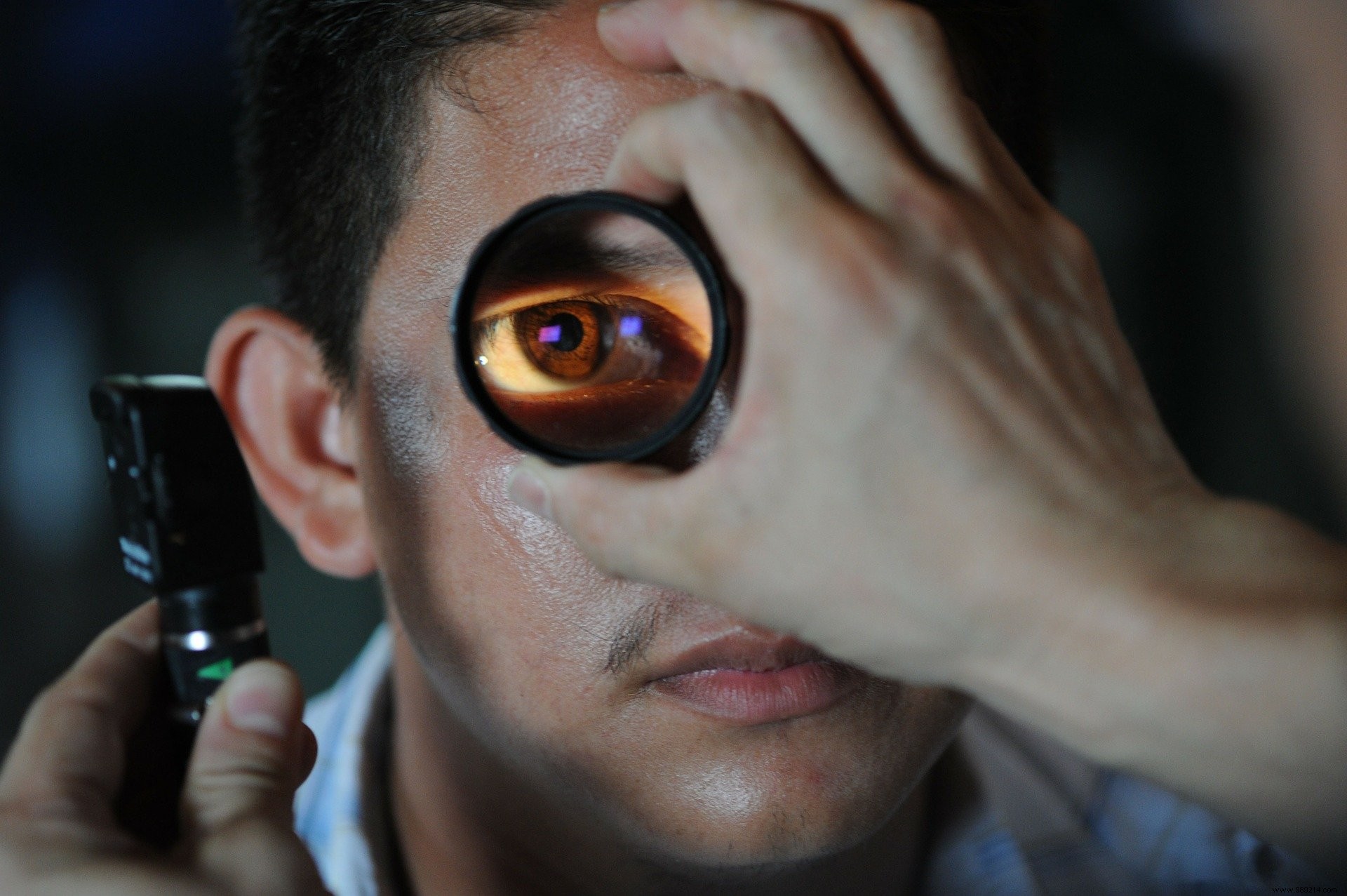A team of researchers announces that they have partially restored the sight of a blind man by integrating proteins capable of capturing light inside one of his retinas . The study, published in the journal Nature Medicine, is the first to describe the successful use of this treatment.
The volunteer, a 58-year-old blind Frenchman, will have to wear special glasses that will give him a ghostly perception of objects in a still narrow field of vision, but that's always better than to see nothing. "It's obviously not the end of the road, but it's a major milestone “, says Dr. José-Alain Sahel, who divides his time between the University of Pittsburgh and the Sorbonne in Paris. For the researcher, this study, result of thirteen years of work , is a proof of concept that will allow the development of more effective treatments.
Vision is the ability to detect, integrate and interpret light rays reflected from the environment. In this process, the retina, a thin tissue composed mainly of neurons lining the back of the eyeball, plays the main role. Like a camera sensor, it has a mosaic of receptors (so-called photoreceptor cells) capable of transforming light radiation in the visible range into electrical signals.
Next, note that the electrical signals produced by our photoreceptors are not transmitted directly to the brain. Our retinas are made up of five major classes of cells organized into five layers. In this configuration, it is the last layer, formed by the ganglion cells, which transmits information to the brain via the optic nerve.
Researchers have been working on the problems of retinitis pigmentosa for a long time . This inherited genetic disease involves the loss of photoreceptor cells in the retina. It can thus lead to complete blindness. Over two million people worldwide are concerned.
As part of this work, Dr. Sahel and his team relied on gene therapy to transform ganglion cells into new photoreceptor cells through proteins derived from algae and other microbes capable of making any nerve cell sensitive to light.
In the early 2000s, neuroscientists had already discovered how to install some of these proteins in the brain cells of laboratory animals by injecting viruses carrying their genes.
The purpose of this technique, called optogenetics , was to build new light-sensitive channels to probe brain function. By inserting a small light into an animal's brain, researchers could remotely turn a certain type of brain cell on or off. The method, revolutionary, had then allowed the discovery of circuits underlying many types of behavior.
As part of this new work, Dr. Sahel and his team wondered if they could use optogenetics to add photosensitive proteins to retina cells .

These optogenetic proteins, on the other hand, were not sensitive enough to produce an image from ordinary light entering the eye. For this study, the researchers then opted for a protein sensitive only to amber light, more "pleasing" to the eye than other colors. They then relied on viruses capable of supplying these amber proteins to the ganglion cells of the retina.
Then the goal was to come up with a device that could transform visual information from the outside world into amber light that could be recognized by these ganglion cells. The challenge was daunting. Our eyes indeed naturally swing in tiny movements several times per second. And each jump involves many changes in light levels. A device integrated into special glasses was nevertheless able to see the light of day.
After testing their gene therapy and glasses on monkeys, the researchers next wanted to inject viruses carrying protein genes into the eyes of blind human volunteers. From there, they would then have to wait several months for the ganglion cells to develop optogenetic proteins. Then, if successful, they would then train those volunteers to use the glasses.
Finally, due to the pandemic, the researchers were only able to test their approach on a single volunteer, a 58-year-old Breton. For seven months, the man wore his glasses for as long as possible, both at home and on the go. And one day, surprise…. He realized he could see the white stripes of a crosswalk!
During subsequent laboratory tests, the researchers then discovered that this man could reach out and touch a notebook on a table. He would also have managed to correctly count the correct number of cups placed in front of him twelve times out of nineteen.

Of course, it will take a lot more testing and such positive clinical results before considering optogenetics as a standard treatment for certain forms of blindness. However, research is moving in the right direction. Over the next few months, Dr. Sahel and his colleagues will be in charge of recruiting other volunteers to test different approaches and improve their glasses.